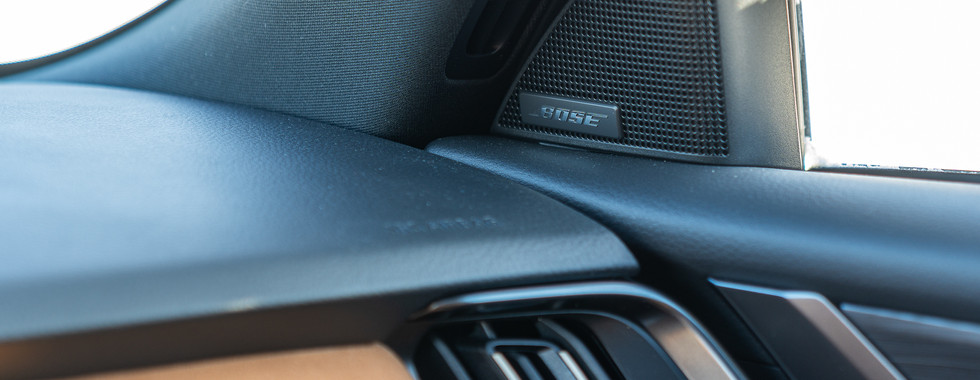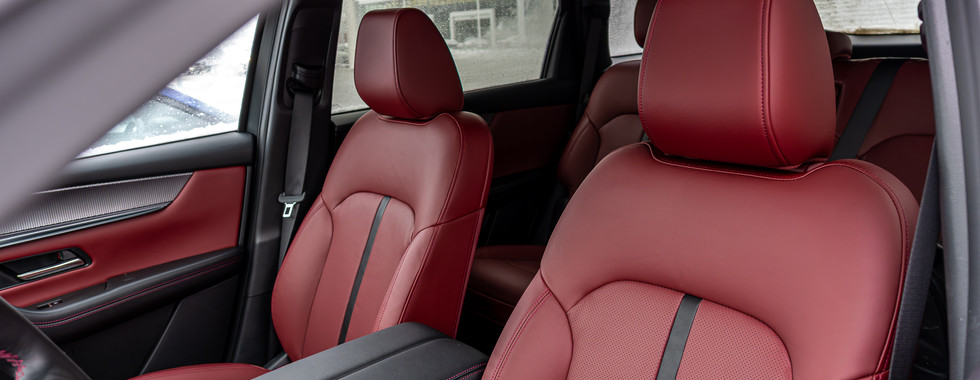Mazda CX-70: MHEV vs PHEV Comparison Review, Specs & Price Analysis
- Marc Gonzalez
- 19 hours ago
- 5 min read
Mazda has increased sales in the last few years thanks to their well-designed SUVs. Last year, they debuted a large two-row SUV based on the Mazda CX-90 platform, competing with the other automakers. The new Mazda CX-70 is also available in two different powertrains: a 6-cylinder engine and a plug-in hybrid, similar to its brother. Over the holidays, we had the opportunity to test both powertrains. We will explore the differences between both. The Mazda CX-70 MHEV has an MSRP of $66,455.43, while the PHEV is $66,912.49. Both are built at the Hofu, JPN plant.

You might wonder if the Mazda CX-70 and CX-90 are identical. The answer is no, but nearly. They share the same platform, length, and wheelbase. You need to see them side by side to notice the differences. The CX-70 has a more muscular appearance due to less chrome. Mazda also equipped the CX-70 with different 21-inch alloy wheels, enhancing its modern and sporty design. The rear of both models is quite similar as well. Check out our last review of the Mazda CX-90 here.

The interior of the Mazda CX-70 is almost identical to the CX-90, so we won't delve into too many details. The Windsor Tan Nappa Leather interior in the 6-cylinder version looks and feels luxurious, reflecting Mazda's commitment to high-end design. Premium materials are used throughout the seats, dashboard, and center console, giving the interior a more expensive feel. The steering wheel combines brown and black tones, adding to the appealing aesthetic, while the black interior option remains stylish and mainstream. The digital gauge cluster is wide and impressive, and the infotainment screen supports wireless Apple CarPlay and Android Auto, with Amazon Alexa making its debut in the Mazda lineup. The physical climate controls and the knob for screen navigation are user-friendly features we appreciate.
Mazda continues to offer luxury and refinement at an affordable price with its interior space and amenities. The front seats are comfortable, and the spacious back seat can accommodate three people. While the middle seat is typically for emergencies, it can be used for short trips, like driving kids to a birthday party. The front seats are heated and ventilated, and the outer rear seats are heated, which is great for colder climates. The ISOFIX ports and rear anchors are visible on the rear seats. The new CX-70 lacks a third row, increasing cargo space compared to the CX-90. Interestingly, the cupholders for the non-existent third row are still present. In the cargo area, the rear seats can be folded down electronically but not back up. The cargo capacity is 1,122 litres in its standard configuration, expandable to 2,132 litres with the rear seats folded down. Although it doesn't have the largest cargo capacity, the 5.1-meter (16.73 ft) long vehicle can tow up to 5,000 lbs (3,500 lbs for the PHEV).
Under the hood, the Mazda CX-70 shares similarities again with the CX-90. The CX-70 offers two engine options: a six-cylinder engine and a plug-in hybrid version. The GS-L and GT trims feature a 3.3L turbocharged inline-six engine paired with an eight-speed automatic transmission and a Mild Hybrid system, delivering 280 hp and 332 lb-ft of torque. The GT-P and Signature trims come with a High Output version of the same powertrain, increasing the power to 340 hp and 369 lb-ft of torque with Premium 93 fuel. The plug-in hybrid trims have a 2.5L e-Skyactiv PHEV 4-cylinder engine and a 68-kW electric motor powered by a 17.8 kWh battery pack. An eight-speed automatic transmission also manages this powertrain. The PHEV version provides 323 hp and 369 lb-ft of torque with Premium 93 fuel, losing only four hp with Regular fuel. Both models can accelerate to 100 kph in approximately 6.1 seconds, which is impressive for family-oriented vehicles.

On the road, the Mazda CX-70 MHEV is, once again, the best of both worlds in terms of driving experience. The smoothness of the six-cylinder engine is unparalleled among the general brands, and the power delivery is linear and easy to manage. It also has a lot of pep; you can quickly drive over the speed limit, so you must be careful! It is not a vehicle meant for hard accelerations; even if you try to use the paddle shifters, the transmission isn't as responsive and doesn't provide the same smooth experience. We were pleased to see an even better fuel economy than the government figures: it is officially rated at 8.5L/100km(29.4mpg) on the highway, and we were routinely able to achieve an even better figure, going as low as 7.2L/100km (33.6mpg). In the city, the average hovered around 12.5L/100km (18.8mpg) instead of 10.5; it is still a six-cylinder engine, after all!

The CX-70 PHEV is still the most fuel-efficient version, thanks to its electric motor and 17.8 kWh battery pack. We got to drive this vehicle in the middle of winter, in January, the most brutal month for electric vehicles in colder climates. We averaged about 27-29 km in EV mode when it was warm enough to drive in that mode. The fuel economy was as expected; we had a highway average of 10.2L/100km compared to 8.7 announced, reflecting the penalty of the harsh Canadian winters. The charging time is about seven hours when the battery is empty; what's funny is that sometimes, the vehicle supposedly shows the remaining range as 0km despite the indicator being almost halfway! The absence of fast-charging capabilities is disappointing. Now, driving-wise, the CX-70 PHEV still has that same nagging feeling from the start; the slight hesitation every time you get to a standstill can be annoying, especially in traffic in the city. It's okay once the vehicle reaches 25-30 kph; the transmission also manages the power well in hybrid and EV modes. When you floor the gas pedal, you can feel the little kick of the electric motor with the four-banger engine, thus helping the acceleration feeling.

On a positive note, both models handle corners well, with precise enough steering and limited body roll for the category. It is fun yet easy to toss around in corners, while parking maneuvers are also a breeze. The suspension is on the firmer side compared to its rivals, which helps daily but can be a little tough to handle on dirt roads; the off-road drive mode is present, but proper off-road tires would be an improvement. Braking is easy to manage in both cars.

The Mazda CX-70 models exemplify the successful turnaround of the Japanese automaker in recent years. Both are modern and compelling representations of what an SUV should be. You might be wondering whether to choose the Mazda CX-70 or the CX-90. Given their similarities and tiny third row in the CX-90, the decision may come down to incentives and lease or financing deals. The CX-70 and CX-90 are nearly identical, with both offering great features. If you prefer the CX-90, that's a solid choice. Alternatively, if you don't need the third row, opting for the CX-70 is perfectly fine. Ultimately, having more choices is beneficial for consumers.

Disclaimer: Mazda has lent us this vehicle as a press vehicle for one week. We have no affiliation with Mazda Canada. The above reflects our personal opinion of the cars referred to above.












































